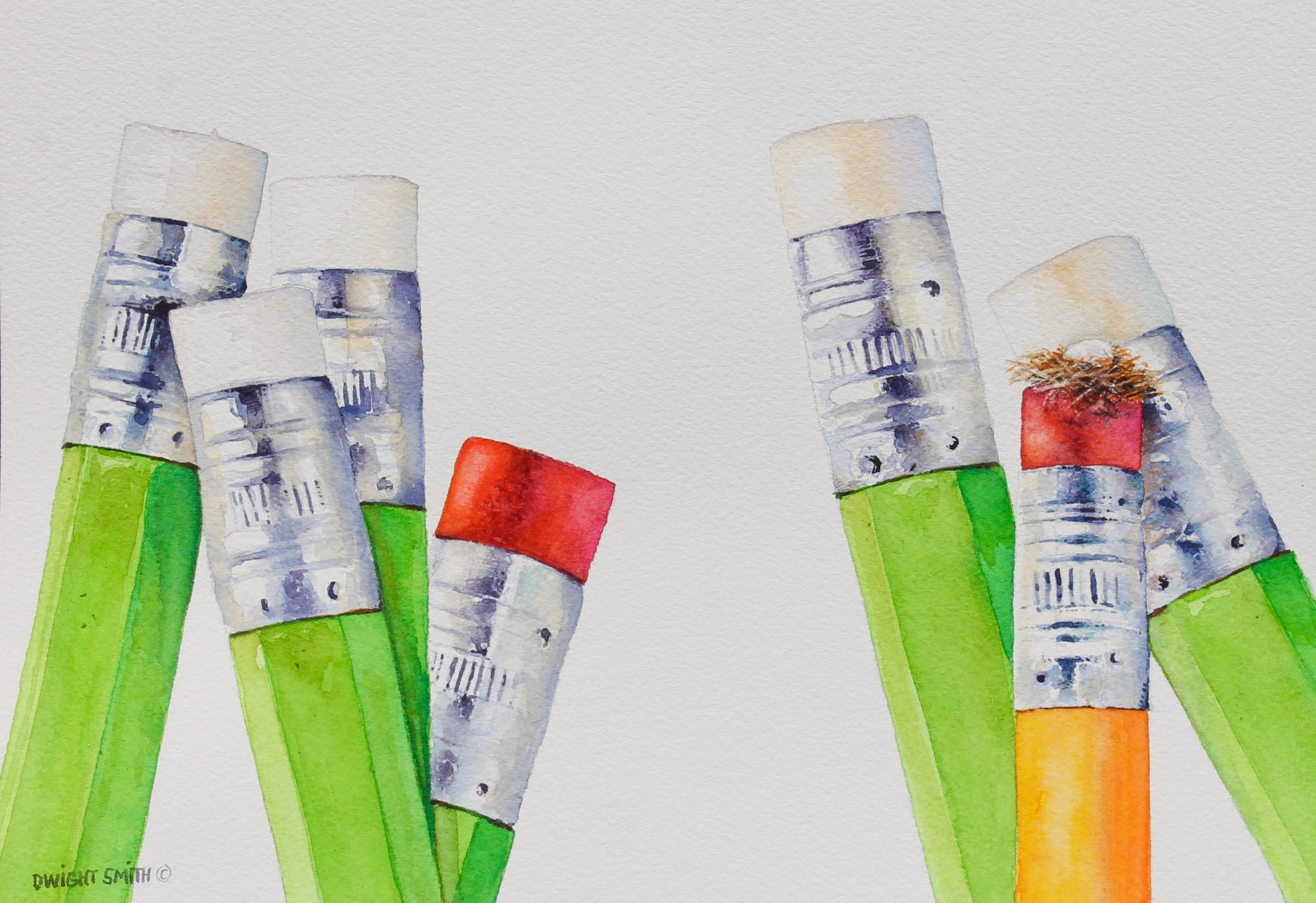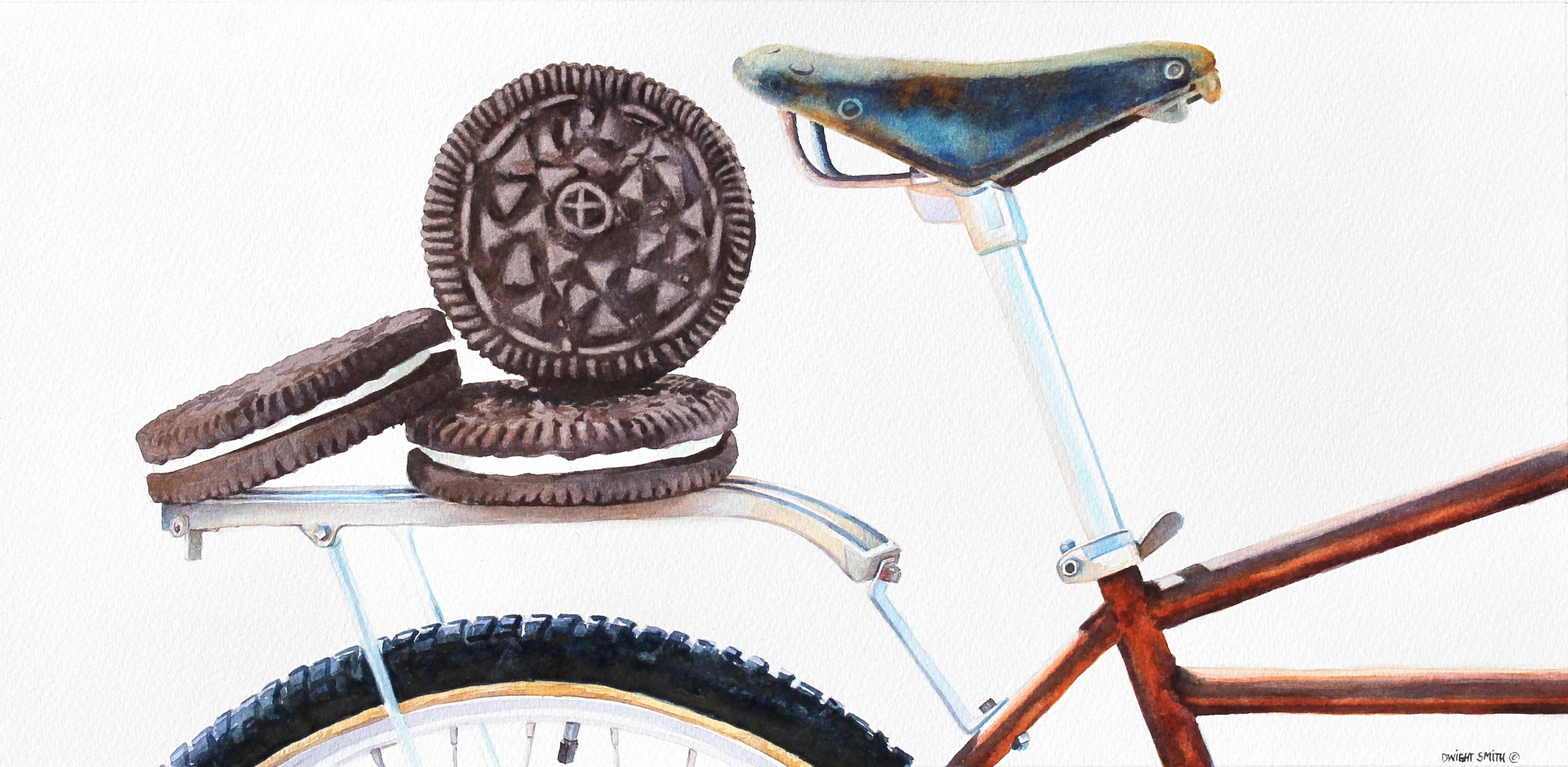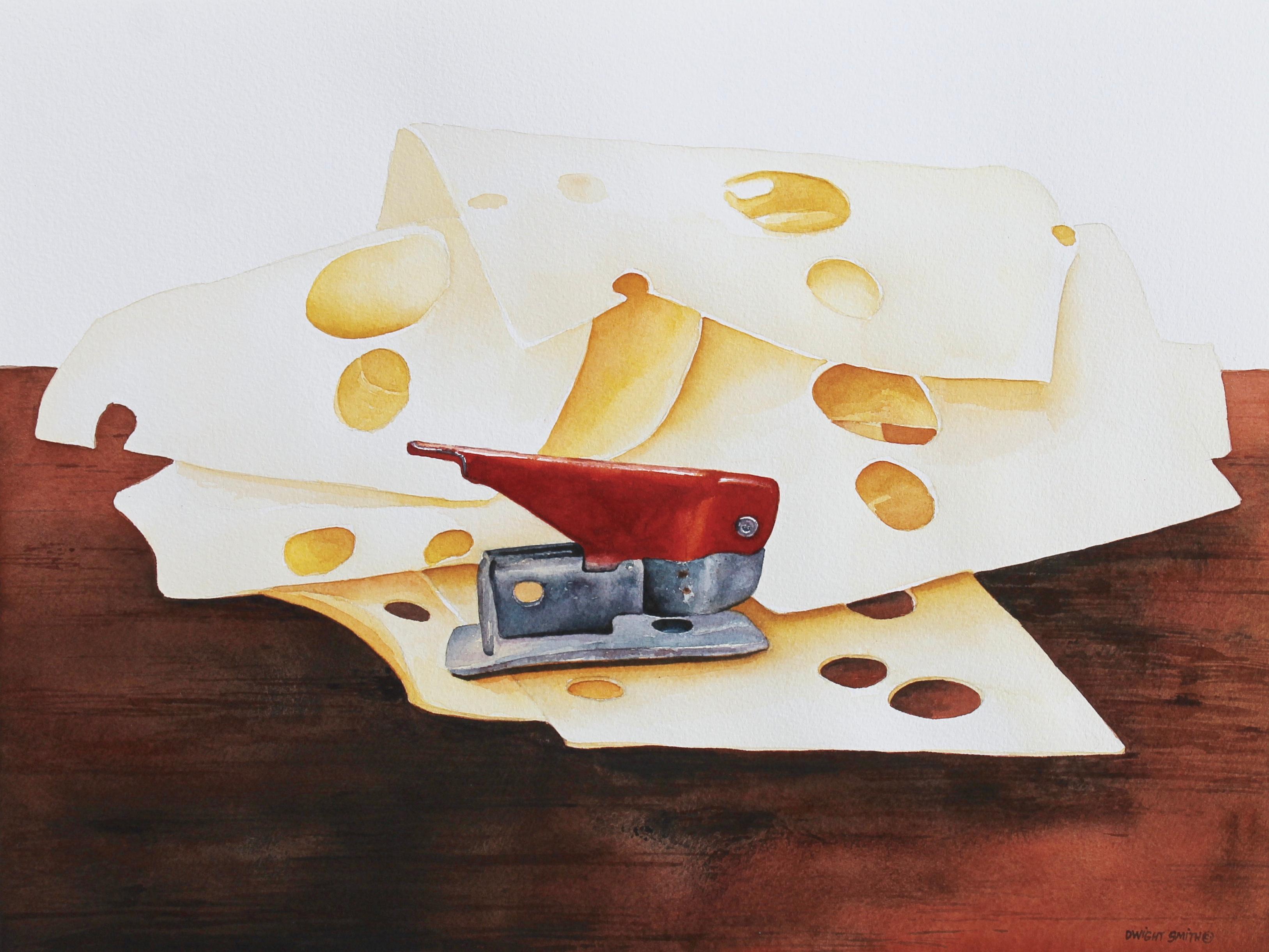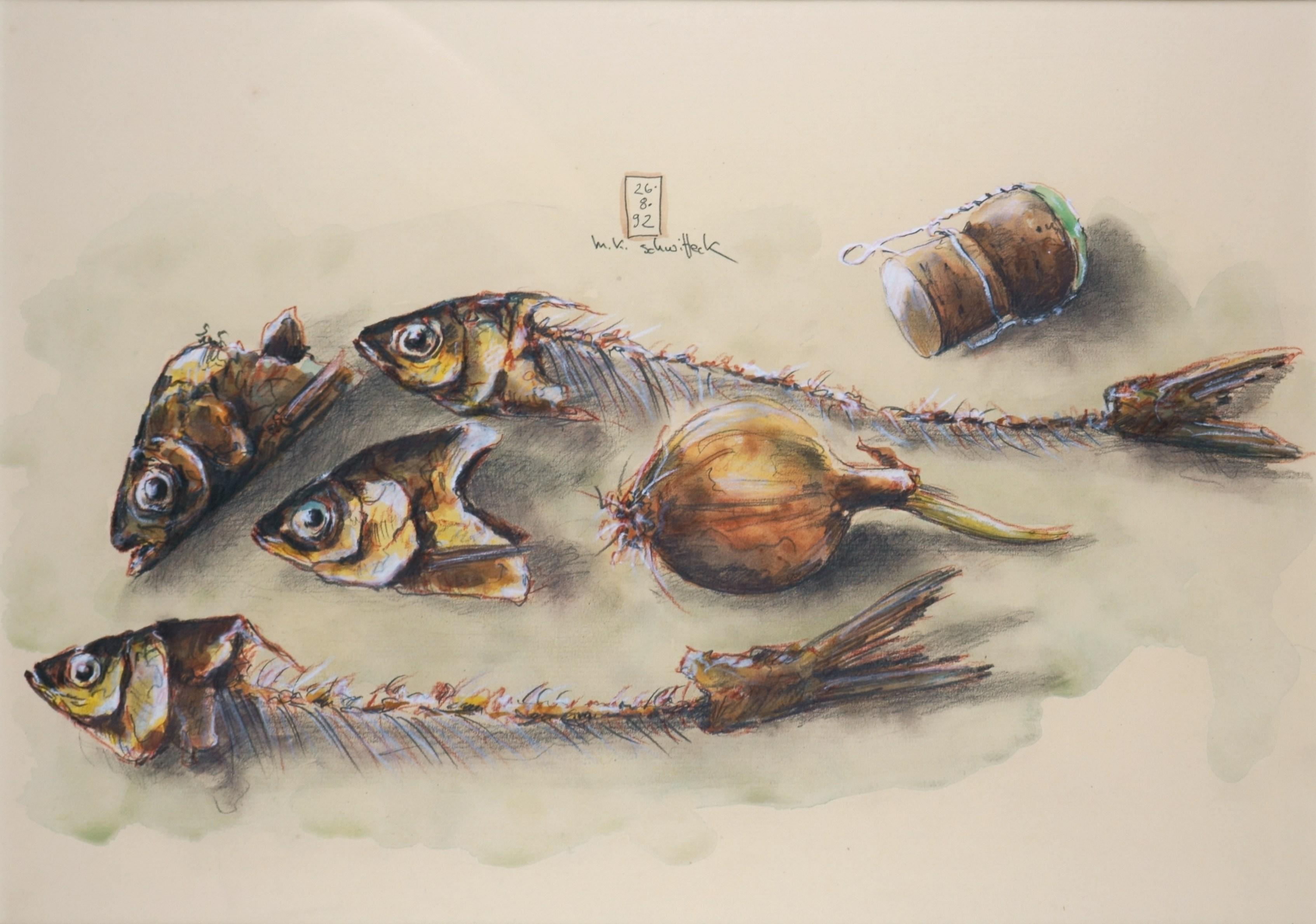Eugene BermanTrompe-l'Oeil Study1934
1934
About the Item
- Creator:Eugene Berman (1899 - 1972, Russian)
- Creation Year:1934
- Dimensions:Height: 14.75 in (37.47 cm)Width: 11.25 in (28.58 cm)
- Medium:
- Movement & Style:
- Period:
- Condition:Excellent. Fresh colors.
- Gallery Location:Fairlawn, OH
- Reference Number:
- ShippingRetrieving quote...Ships From: Fairlawn, OH
- Return PolicyA return for this item may be initiated within 10 days of delivery.
- Surrealist landscape with skull and red daisyBy Charles Harris ( Beni Kosh )Located in Fairlawn, OHSurrealist landscape with skull and red daisy Watercolor on paper, 1960-1970 Unsigned Stamped with the artist's estate stamp verso (see photo) Provenance: Estate of the artist Refere...Category
20th Century Surrealist Still-life Drawings and Watercolors
MaterialsWatercolor
- Flower StudiesBy Mary SpainLocated in Fairlawn, OHUnsigned Graphite and colored pencils on laid paperCategory
Mid-20th Century Surrealist Still-life Drawings and Watercolors
MaterialsGraphite, Color Pencil
- Plum Branches and FlowersBy Joseph O'SickeyLocated in Fairlawn, OHPlum Branches and Flowers watercolor on wove paper, 1985 Signed and dated in pencil lower right corner From the artist's 1985 sketchbook Inspired by O'Sickey's love of Japanese and Chinese art and calligraphy. Provenance: Estate of the artist Condition: Excellent Image/Sheet size: 13 5/8 x 17 inches Joseph B. O’Sickey, Painter 1974 CLEVELAND ARTS PRIZE FOR VISUAL ARTS The title conferred on him by Plain Dealer art critic Steve Litt in a 1994 article, “the dean of painting in northeast Ohio,” must have pleased Joseph O'Sickey. It was more than 30 years since he had burst onto the local (and national) art scene. O’Sickey was already in his 40s in that spring of 1962 when he had his first one-man show at the Akron Art Museum and was signed by New York’s prestigious Seligmann Galleries, founded in 1888. In the decade and a half that followed, he would have seven one-man shows at Seligmann, which had showed the work of such trailblazing figures as Seurat, Vuilliard, Bonnard, Leger and Picasso, and appear in all of the group shows. O’Sickey took the Best Painting award in the 1962 May Show at the Cleveland Museum of Art (CMA). He and would capture the same honor in back-to-back May Shows in 1964 and ’65, and again in 1967. The remarkable thing, noted the Plain Dealer’s Helen Borsick, was that he accomplished this sweep in a variety of painterly styles, even using that most hackneyed of subjects, flowers. “The subject doesn’t matter,” he told her, “what the artist brings to it is the important thing.” O’Sickey’s garden and landscape paintings were big and bold, eschewing delicate detail in favor of vitality and impact. The great art collector and CMA benefactor Katherine C. White, standing before one of O’Sickey’s vivid garden paintings, compared the sensation to “being pelted with flowers.” Though he might represent an entire blossom with one or two smudged brush strokes or a stem with a simple sweep of green, O’Sickey rejected the moniker of Impressionist—or Pointillist or Abstract painter or Expressionist. “My work,” he said, “is a direct response to the subject. I believe in fervor and poetic metaphor. I try to make each color and shape visible and identifiable within the context of surrounding colors and shapes. A yellow must hold its unique quality from any another yellow or surrounding color, and yet read as a lemon or an object, by inference. It does not require shading or modeling—the poetic evocation is part of the whole.” “The subject,” O’Sickey used to tell his students at Kent State University, where he taught painting from 1964 to 1989, “has to be seen as a whole and the painting has to be structured to be seen as a whole.” He liked to think of it as “a process of controlled rapture.” When, in the 1960s, fond childhood memories drew him to the zoo, he found himself responding to the caged animals in their lonely dignity (or indignity) with sharp-edged, almost silhouette-like forms that evoked Matisse’s paintings and cut-paper assemblages. One observer was left with the impression that the artist had “looked at these animals, past daylight and into dusk when they lose their details in shadow and become pure shapes, with eyes that are seeing the viewer rather than the other way around. This is a world of shape and essence,” wrote Helen Borsick. “All is simplification.” O’Sickey attributed his ability to capture his subjects with just a few strokes—in an almost iconographic way—to a rigorous exercise he had imposed upon himself over a period of several months. Limiting his tools to a large No. 6 bristle brush and black ink, he set himself the task of drawing his pet parakeet and the other small objects in its cage (cuttlebone, feeding dish, tinkling bell) hundreds of times. The exercise gave him “invaluable insights into painting. . . . Because of the crudity of the medium, every part of these drawings had to be an invention and every mark had to have its room and clarity.” Then he began adding one color at a time—“still with the same brush and striving for the same clarity”—and headed off to the zoo where “the world opened up to me. I learned how little it took to express the subject.” Born in Detroit at the close of the First World War, O’Sickey grew up in St. Stanislaus parish near East 65th and Fleet on Cleveland’s southeast side. (The apostrophe was inserted into the family’s proud Polish name by a clerk at Ellis Island.) An early interest in drawing and painting may have been kindled by the presence on the walls of Charles Dickens Elementary School, one of only three grade schools in the district with a special focus on the arts, of masterful watercolors by such Cleveland masters as Paul Travis, Frank N. Wilcox and Bill Coombes. As a youngster O’Sickey took drawing classes at the Cleveland Museum of Art, and he and his brother spent hours copying famous paintings; while a student at East Tech High School in the mid-’30s, he attended free evening classes in life drawing with Travis and Ralph Stoll at the John Huntington Art and Polytechnic Institute, and Saturday classes at the Cleveland School (later the Cleveland Institute) of Art, where he earned his degree in 1940 under the tutelage of Travis, Stoll and such other legendary figures as Henry Keller, Carl Gaertner, William Eastman, Kenneth Bates...Category
1980s Contemporary Still-life Drawings and Watercolors
MaterialsWatercolor
- untitled (Reclining Female Nude)By Charles Harris ( Beni Kosh )Located in Fairlawn, OHAka Beni Kosh Still Life with Flowers Colored pencil on paper Unsigned Signed with the estate stamp on reverse (see photo) Estate No. 716 Condition: Soft fold through image, wri...Category
1960s Contemporary Still-life Drawings and Watercolors
MaterialsGouache
- IrisBy Greta AllenLocated in Fairlawn, OHIris Watercolor on paper, c. 1920 Unsigned Provenance: Estate of the Artist Condition: Excellent, slight surface dirt Image/Sheet size: 15 x 10 1/4 inches Allen was trained in Boston...Category
20th Century American Impressionist Still-life Drawings and Watercolors
MaterialsWatercolor
- Baggage Claim (Bags #1)By Darius StewardLocated in Fairlawn, OHCreated in 2017 this series, Baggage Claim, speaks to the symbolic emotional weight one accumulates through life and how the accumulations weigh down the spirit. The artist used handbags...Category
2010s Contemporary Still-life Drawings and Watercolors
MaterialsWatercolor
- Green Pine Nest, Original PaintingBy Dwight SmithLocated in San Francisco, CA
Artist Comments
Artist Dwight Smith paints a modern realist composition of the ends of pencils. He paints them in different colors to lead your eye through the painting. Dwight...Category21st Century and Contemporary Surrealist Still-life Drawings and Waterco...
MaterialsWatercolor
- Diggity Dog, Original PaintingBy Dwight SmithLocated in San Francisco, CA
Artist Comments
Painted in a realist tradition, a hotdog in a bun takes center stage in this modern still life. Artist Dwight Smith enjoys exaggerating the scale of objects t...Category21st Century and Contemporary Surrealist Still-life Drawings and Waterco...
MaterialsWatercolor
- Cookie Ride, Original PaintingBy Dwight SmithLocated in San Francisco, CA
Artist Comments
This vibrant still-life watercolor captures the essence of indulgence and a healthy lifestyle. Painted in the realist tradition, the piece showcases chocolate c...Category21st Century and Contemporary Surrealist Still-life Drawings and Waterco...
MaterialsWatercolor
- Trade SecretsBy Dwight SmithLocated in San Francisco, CA
Artist Comments
How is that made? How is that baked? How did they get that color? How did the holes in Swiss cheese get there? Trade Secrets answers that question. Hole ...Category21st Century and Contemporary Surrealist Still-life Drawings and Waterco...
MaterialsWatercolor
- Still life with fish bones, pencil and pencil sharpenerLocated in Berlin, DEManfred K. Schwitteck (*1948), Still life with fish bones, pencil and pencil sharpener, 1992. watercolor over pencil on handmade paper, 31.5 x 45 cm (visible size), 47 x 61 cm (frame...Category
1990s Surrealist Still-life Drawings and Watercolors
MaterialsWatercolor, Pencil
- Still life with fish bones and champagne corks / - Behind still life -Located in Berlin, DEManfred K. Schwitteck (*1948), Still life with fish bones and champagne corks, 1992. watercolor over pencil on handmade paper, 31.5 x 45 cm (visible size), 47 x 61 cm (frame), signed...Category
1990s Surrealist Still-life Drawings and Watercolors
MaterialsWatercolor, Etching





